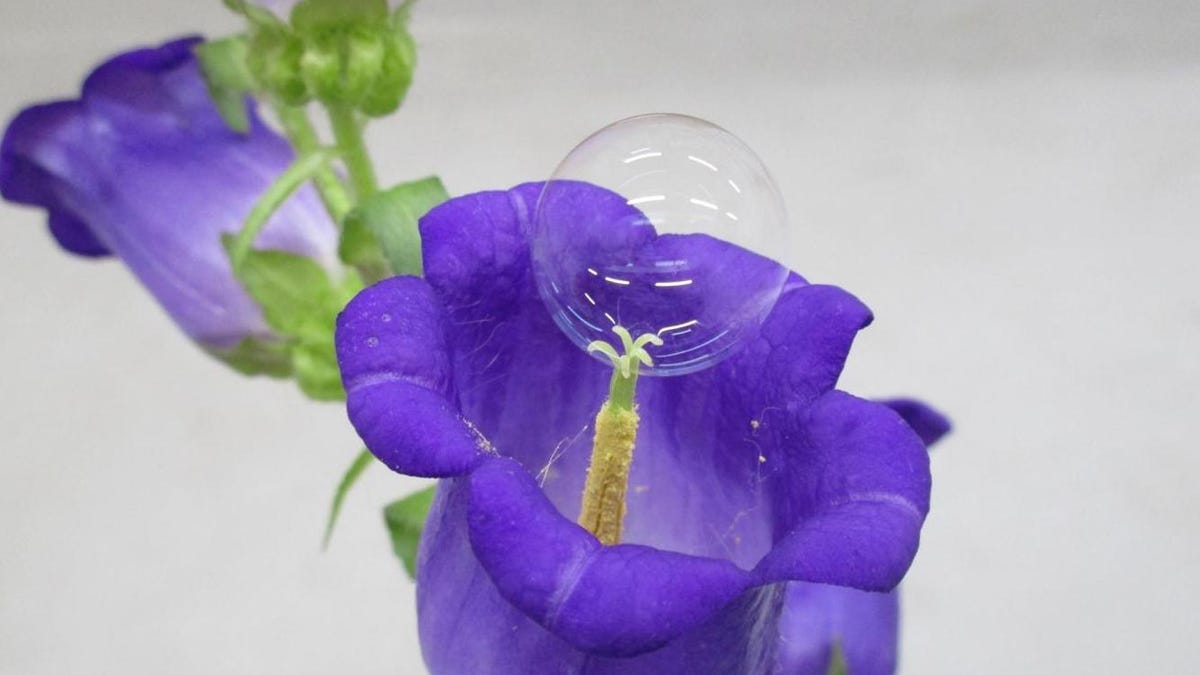Scientists find way to pollinate plants with soap bubbles as bees decline
"Whimsical" experiments with a bubble gun, a pear orchard and a drone show the new technique has promise.
Shimmering soap bubbles are an unexpected new vehicle for turning flowers into fruit.
The search for alternative methods of pollinating crops has taken on more urgency as bee populations decline. Researchers have found that soap bubbles can carry pollen grains and deposit them on flowers.
"It sounds somewhat like fantasy, but the functional soap bubble allows effective pollination and assures that the quality of fruits is the same as with conventional hand pollination," said Eijiro Miyako, associate professor at the Japan Advanced Institute of Science and Technology and lead author of a study published in the journal iScience on Wednesday.
Researchers have been investigating autonomous robotic bees and small drones to handle the work of pollination more efficiently than by hand or existing machine methods. Miyako and other colleagues had previously experimented with a toy drone, but found it had a tendency to damage flowers it made contact with. The soap bubbles represent a much gentler approach to the problem.
The researchers first worked out that soap bubbles could indeed carry pollen. They then tested out different bubble formulations and settled on lauramidopropyl betain, a compound sometimes used in shampoos, as a good vehicle.
Now comes the fun part. The researchers used a bubble gun on a pear orchard, "producing fruit that demonstrated the pollination's success," iScience publisher Cell Press said in a release. They also tested out the use of a drone to direct bubbles at flowers, which proved to be an accurate way to deliver the bubbles.
The early experiments are promising, but there are still some hurdles around figuring out the most precise way to aim the bubbles and how to deal with potential weather issues like rain or wind.
"We expect our multidisciplinary approach combining soap bubbles and drone technology to lead to innovative developments in the field of agricultural engineering," the authors wrote in the paper. This is one bubble that hopefully won't burst.


